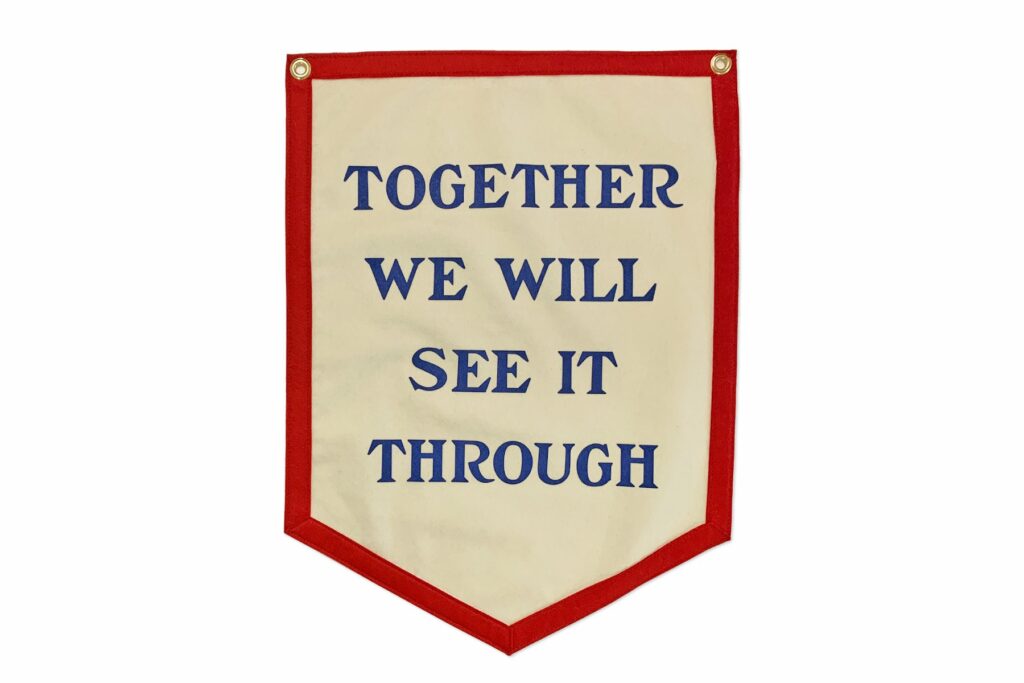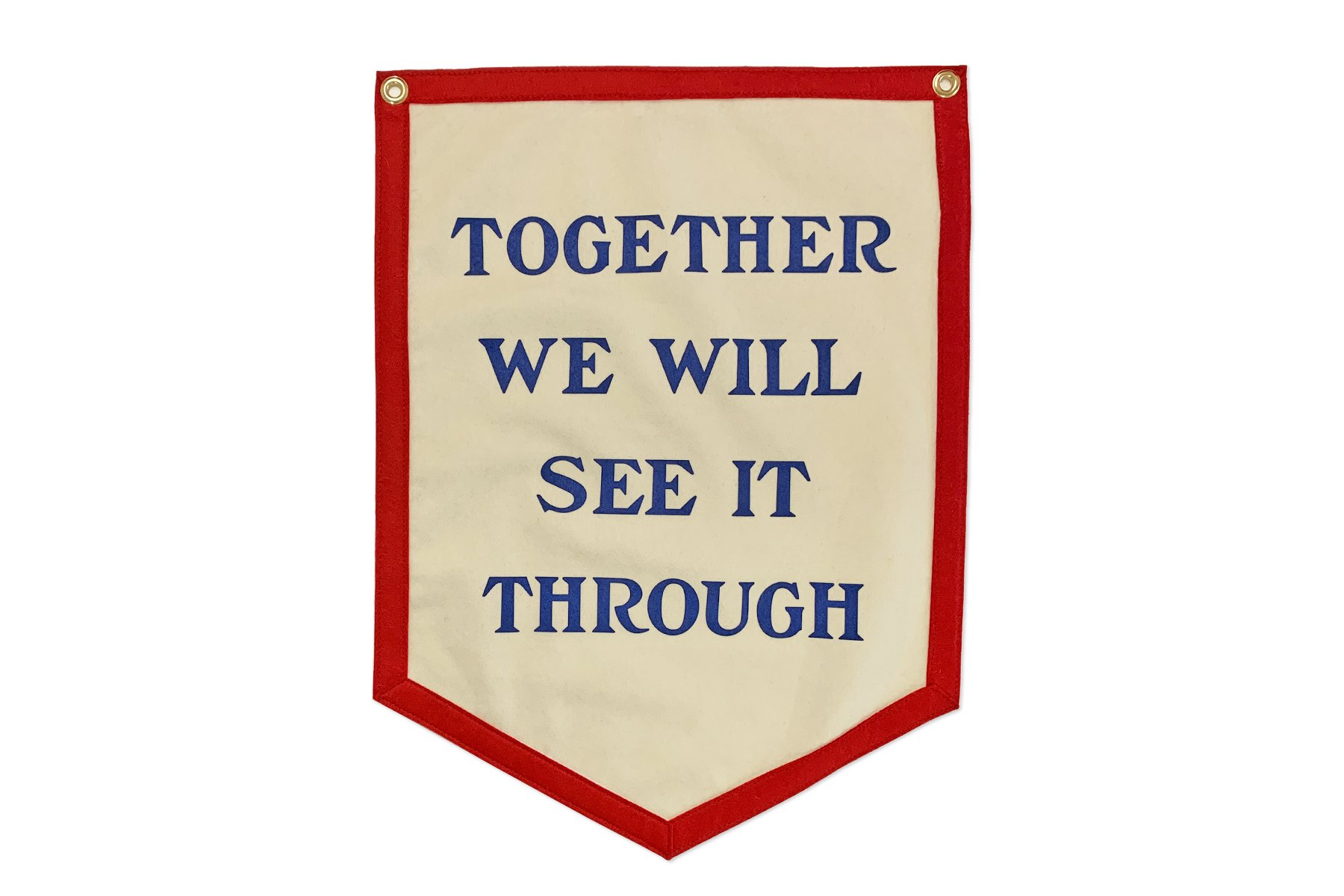“Together we will see it through”
If you’ve been going for a lot of walks in the neighborhood lately (because what else has there been to do?), we’re sure you have spotted these flags hanging in the doorways and windows of your neighbor’s homes created by local pennant manufacturer, Oxford Pennant. The message “together we will see it through” is more than just a feel-good statement. These words gave us something to smile about during a time when many of us were feeling scared, lonely, anxious, and a host of other unsettling emotions over the last 13+ months. So first, we would like to sincerely thank Oxford Pennant for helping us bond together as a community, while instilling in a hope, resiliency, and a sprinkle of joy when we needed it most.
On Tuesday, April 27th, AAF President, Josh Gumulak and board member Sarah Warner had the pleasure of interviewing Dave Horesh, co-founder of Oxford Pennant at Jordan Lema’s Lemur Studios on Main Street downtown. And while we were right across the street from the Oxford Pennant store, the interview was conducted virtually (what times we’re livin’ in) so that Dave could carry on his fatherly duties while simultaneously wowing us with his knowledge and expertise as an entrepreneur, business owner, and marketing and branding expert.
The interview honestly felt like chatting with an old friend. Dave is fun, relaxed, passionate and an incredibly insightful person. In an hour’s time, we covered everything from how Oxford Pennant got started, what the company’s structure looks like today, to where he sees it going in the future (they’re committed to Buffalo)! He shared how they have successfully built and expanded their brand through Instagram, some things he’s learned in his travels that Buffalo could benefit from, and his best advice for those with aspirations to start their own business.
We had a blast talking with him and we hope our listeners enjoyed it just as much! Learn more about AAF, membership perks and upcoming events at aafbuffalo.com or follow us on social @AAFBuffalo.


